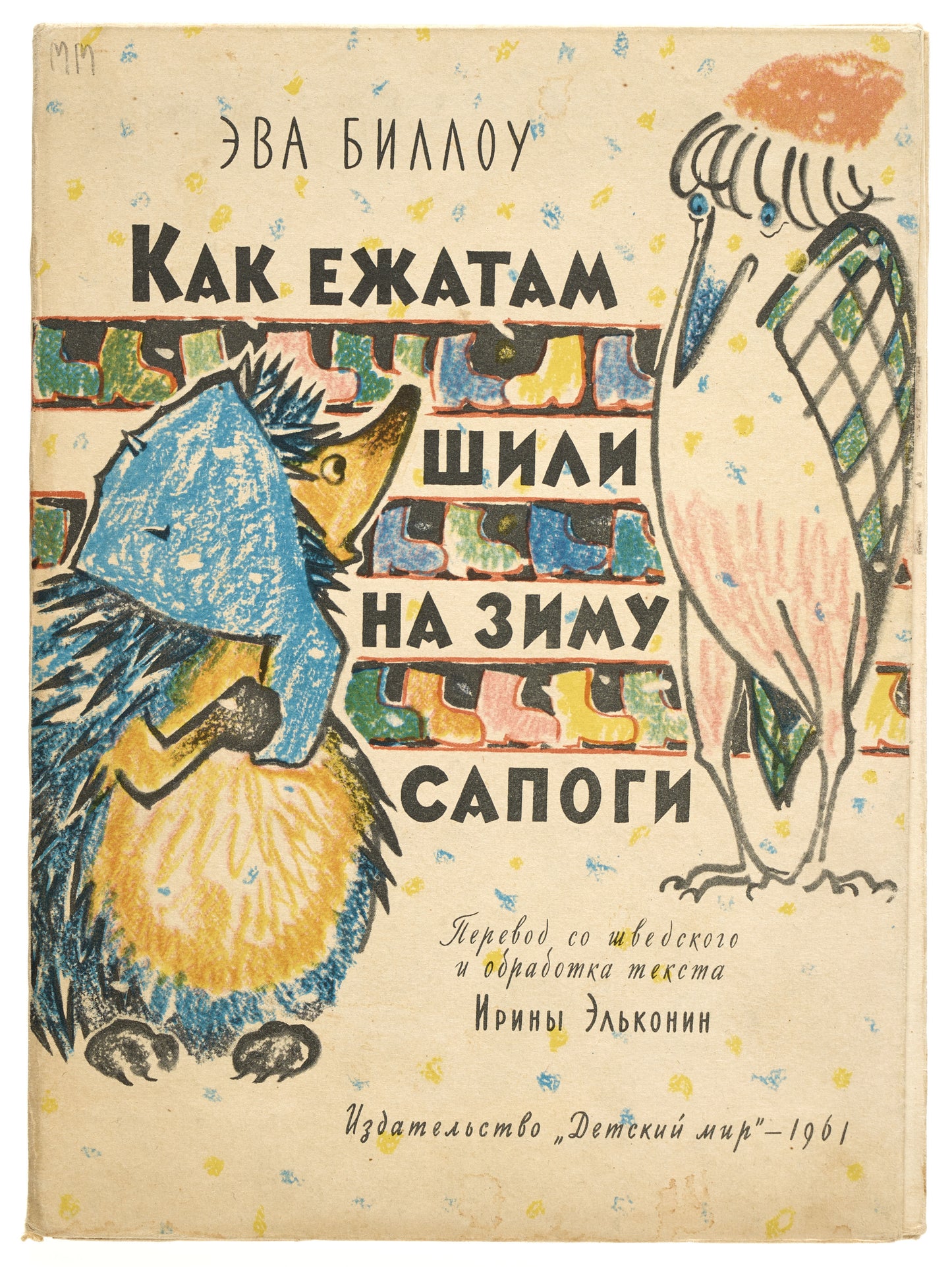Billow, Eva
How Boots Were Sewn for Hedgehogs for Winter. Rare first and only edition.
How Boots Were Sewn for Hedgehogs for Winter. Rare first and only edition.
Couldn't load pickup availability
Billow, Eva [How Boots Were Sewn for Hedgehogs for Winter / Pojkarna Igelkotts vinterskor]. Kak Ezhatam Shili na Zimu Sapogi.
Translation from Swedish and adaptation by Irina Elkonin.
Illustrations by M. Miturich.
Moskva, Izdatelstvo "Detskaya Literatura", 1961.
8vo,1 leaf folded in [10] pp., ill.
Original iIllustrated accordian-style folding binding.
Near very good condition, light wear, small stains, small owner mark to front cover.
This is a translation of a children's book by Eva Billow (1902-1993), a Swedish writer and one of the most influential picture book artists of the 1940s and 1950s. The story revolves around a large family of hedgehogs and their mother, who forgets that hedgehogs hibernate from autumn to spring. The original fairy tale was published in 1948.
The book was illustrated by May Miturich (Miturich-Khlebnikov, 1925–2008), an artist who was the nephew of the futurist poet Velimir Khlebnikov and the son of avant-garde artist Vera Khlebnikova. Miturich studied at the Moscow Polygraphic Institute, where he later became a teacher. In 2005, Miturich was honored with the Japanese Order of the Rising Sun. The translator, Irina Elkonin-Johansson, relocated from the USSR to Sweden in 1962, the year after the book's publication.
The book was part of the children's collection of Inna Shmeleva (1929-2020), an artist who studied under Ely Bielutin, the founder of The New Reality artistic academy. In 1962, Shmeleva participated in the 30th anniversary exhibition of the Moscow Union of Artists at the Central Exhibition Hall (Manège), which faced severe criticism from Nikita Khrushchev. This event marked the end of the period known as the Khrushchev Thaw.
OCLC locates two copies of this edition: in the University of Michigan Library and the Stanford University Library.








